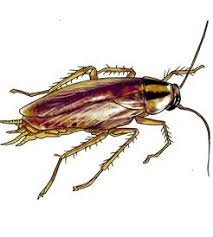Class Hirudinaria comprises which are perhaps the most specialised annelids without parapodia and setae but with suckers.About 300 species of leeches are known to occur in the tropical and temperature part of the globe.Most of them are freshwater, while some are marine or terrestrial . Most of leeches are ectiparasiric, predaceous, feeding on worms, snails, insect larvae,etc.
The genus Hirudinaria includes four species of Indian cattle leeches: H.viridis, H.javanica, H.manilensis and H.granulosa.
Habits and Habitat (Ecology)
Hirudinaria granulosa, the Indian cattle leeches,is found in India ,Burma,Shri Lanka, Pakistan and Bangladesh. It occurs in fresh water pond ,lakes,tanks,swamps and slow strems,where it either swims by vertical undulation or grips objects with its suckers and moves by looping. Like most ectioparasiric leeches, it has a blood sucking (sanguivorous) habit, feeding on the blood of fish and frog and also of cattle and men, who happen to enter the water inhabited by it.
Through hermaphroditic, leeches copulate to bring about cross-fertilization. Eggs are deposited in cocoons. Development us direct, i.e.,there are no free larval stages in the life history.
External Morphology.
- Shape and size. Hirudinaria has a soft, vermiform elongated and dorso-ventrally flattened body, ordinarily 10 to 15 cm long , but a full-grown specimen may even measure upto 35cm in length. Body is broadest near the posterior end narrowest at the anterior end. It is capable of causing great alterations in form and proportion, being ribbon-shaped when extended and almost cylindrical when contracted. In normally - streched leech, the dorsal surface remains somewhat convex with the ventral surface more or less flat. A transverse section through the body is almost oval in outline .Skin is moist and slimy due to abundant secretion of mucus, which helps in cutaneous respiration.
- Colouration. Body of leech is brightly coloured with characteristic markings. Dorsal surface is coloured olive-green and ventral surface orange - yellow or orange-red. On the sides are conspicuous stripes of orange or yellow, bounded ventrally by broad black stripes and dorsally by black sport arranged in a series in the second and fifth annuli of each segment.
- Segmentation. Body of leech is metamerically divided into 33 segments or somites. Except the Frist two and the last seven, each segment is further superficially subdivided into rings or annuli by closely-set grooves or furrows. A typical segment possesses the annuli are . Segments with less than five annuli are referred to as incomplete. A temporary clitellum is formed by segments 9th, 10th, and 11th, during , breeding seasons.
- Receptors. Surface of each annulus is duvided by fine longitudinal furrows into rectangular areas, each bearing a minute and elevated sensory paotlla, the annular reseptor. There are about 18 such receptors on dorsal and 18 on ventral side of each annulus receptor in dorsal and 18 on ventral side of each annulus. Besides these, there are large sensory papillae, called segmental there are large sensory papillae, called segment receptors or sensillae, 4 pairs on dorsal and 3 on ventral side in the annulus of each and 3 on ventral side in the tfrist annulus of each segment. A pair of eyes is borne on dorsal surface by the Frist annulus of each of the five segments, which are termed the ocular segments. The 5 pair of eyes appear as a semicircle of black dots at the anterior end.
Suckers. Each end of the body bears a hollow muscular organ, to he sucker.
- Anterior sucker. Anterior or cephalic sucker comprise the pristomium and three anterior body - somites. It is oval in outline with a ventrally directed, cuo- like hollow, called the pre-oral chamber, a the bottom of which lies the mouth.
Posterior. Posterior end of the body also bear a circular and highly muscular dude, the posterior or anal Acker, also directed downwards. It seven body segments (27 to 33) arranged in concentric rings.
Both the suckers are primarily meant for adhesion and locomotion . The anterior sucker also helps in feeding.
























